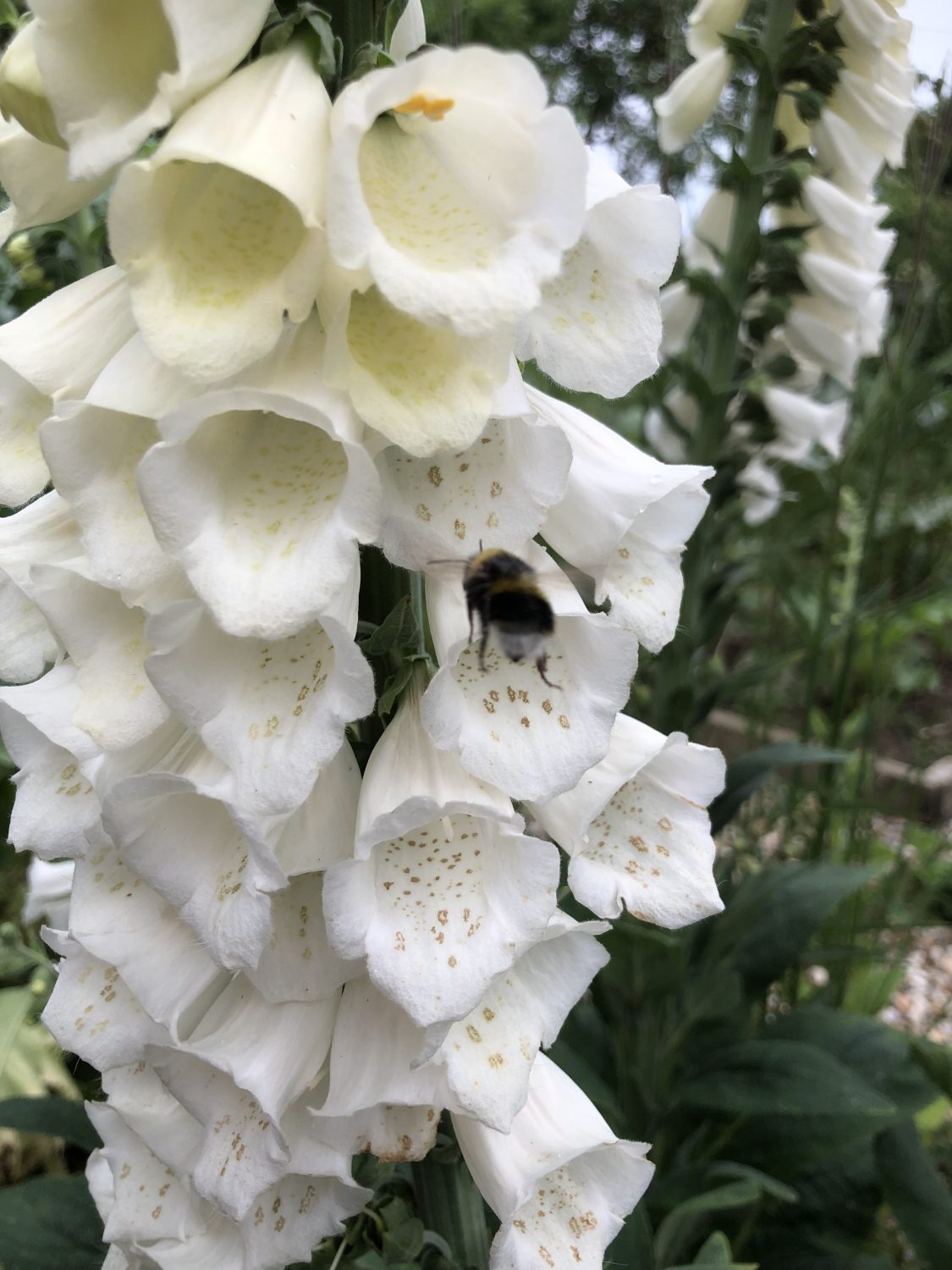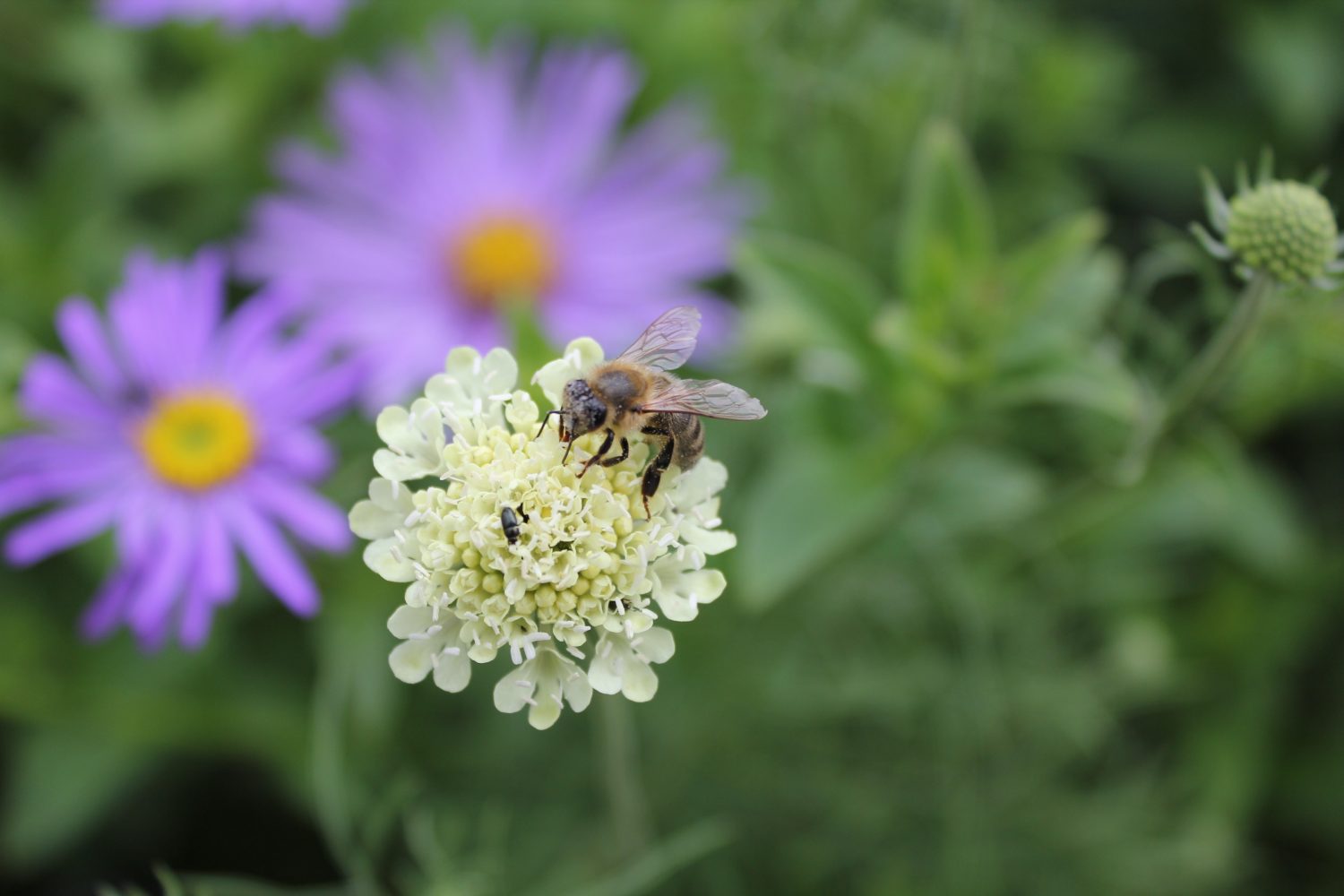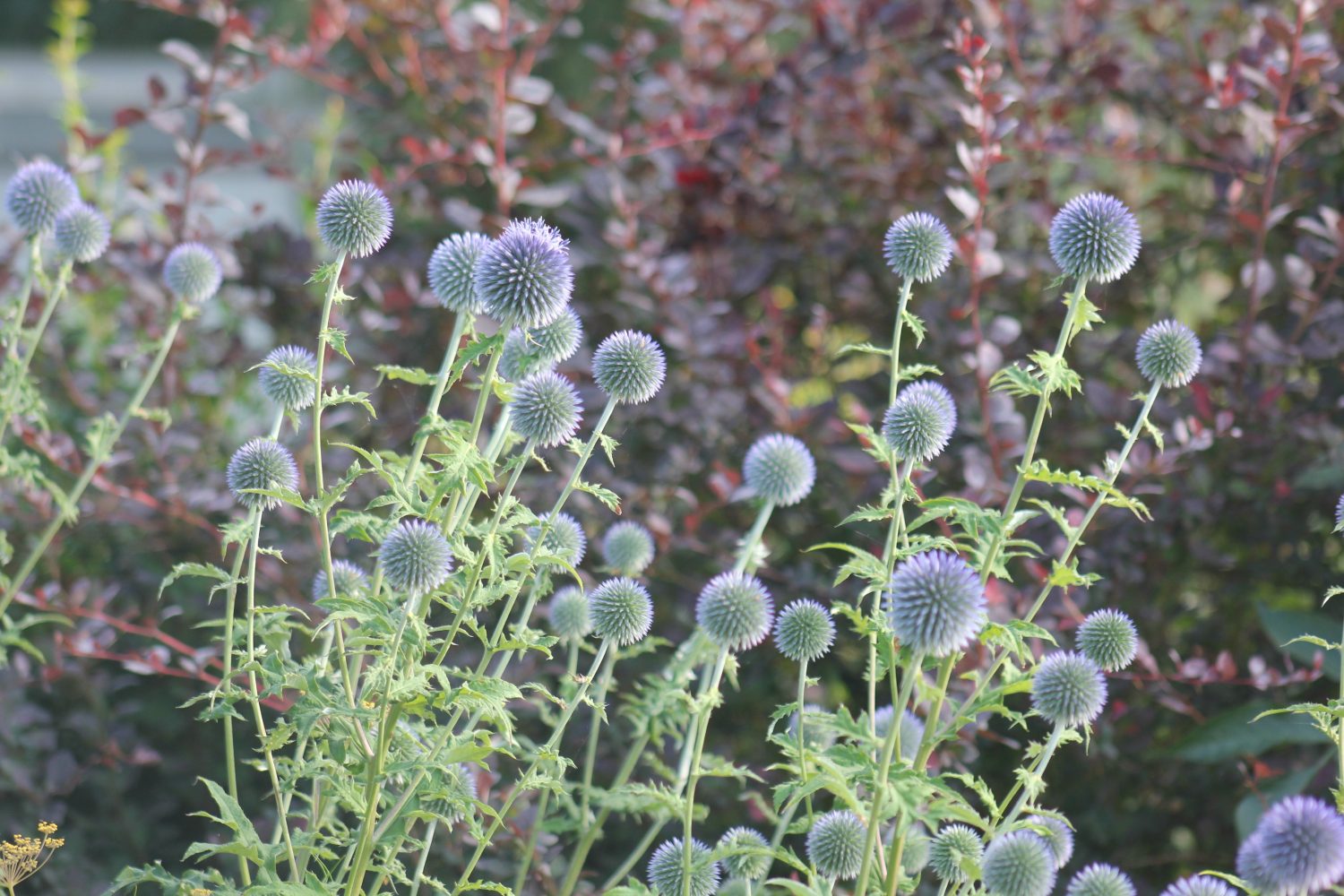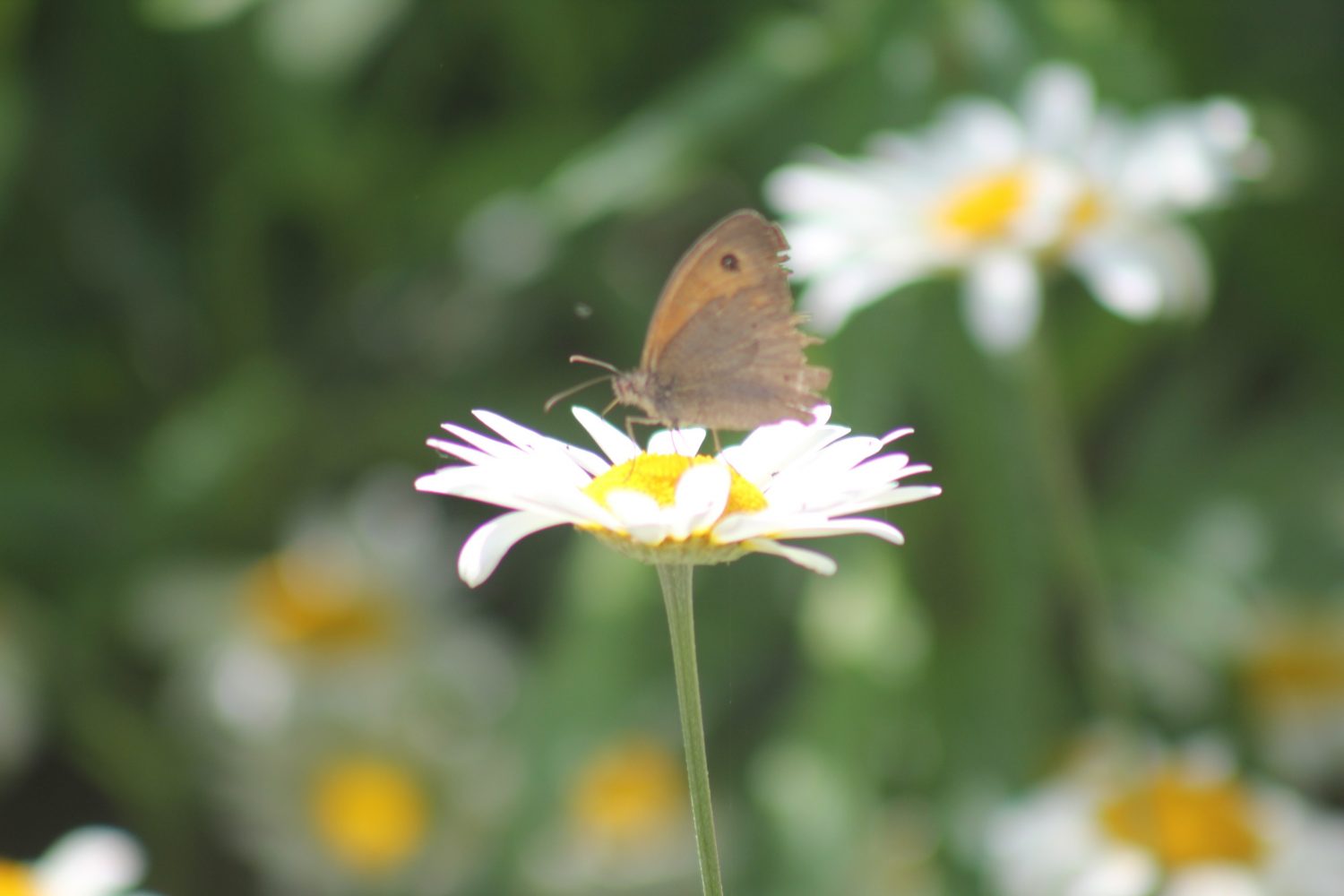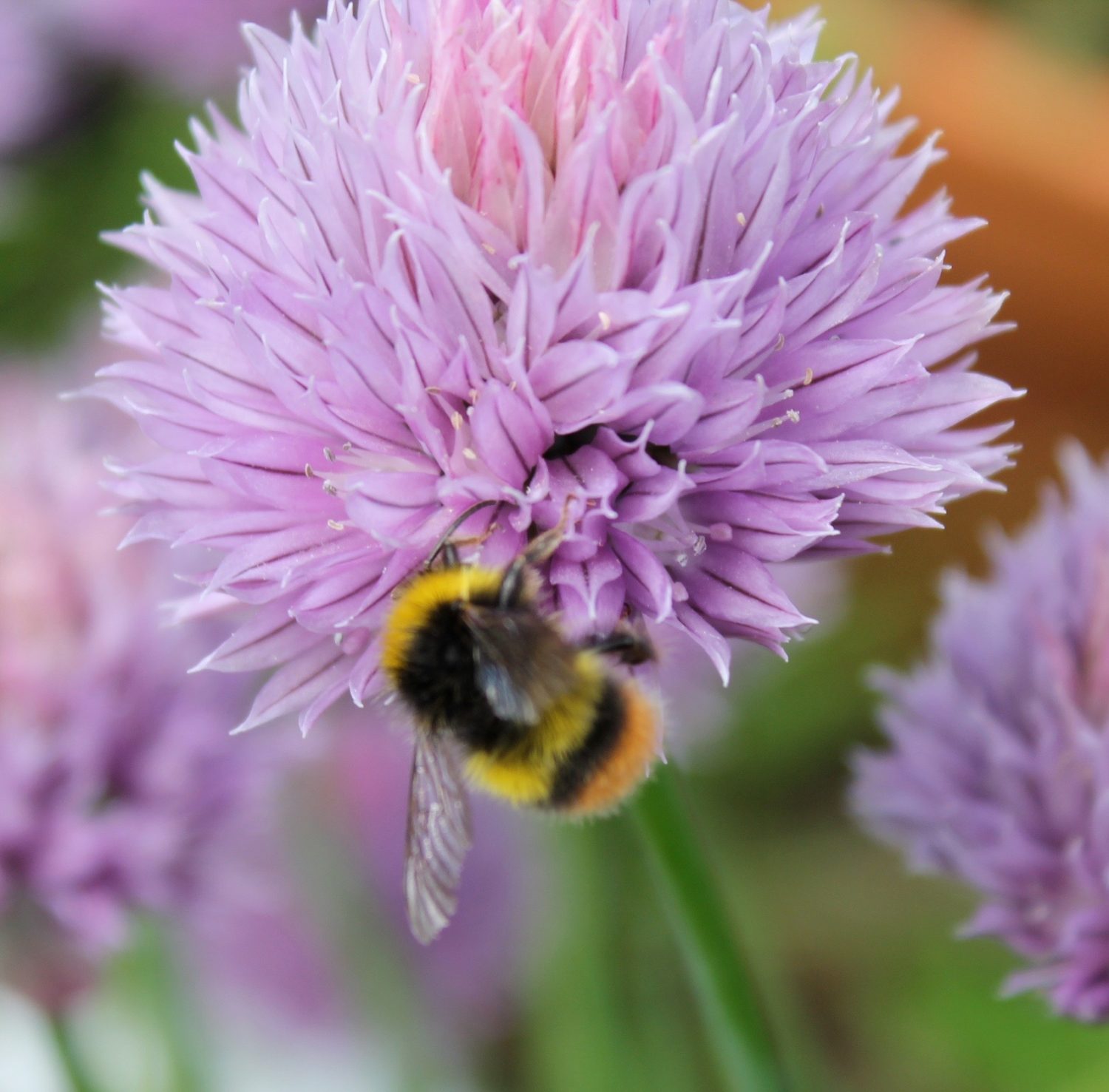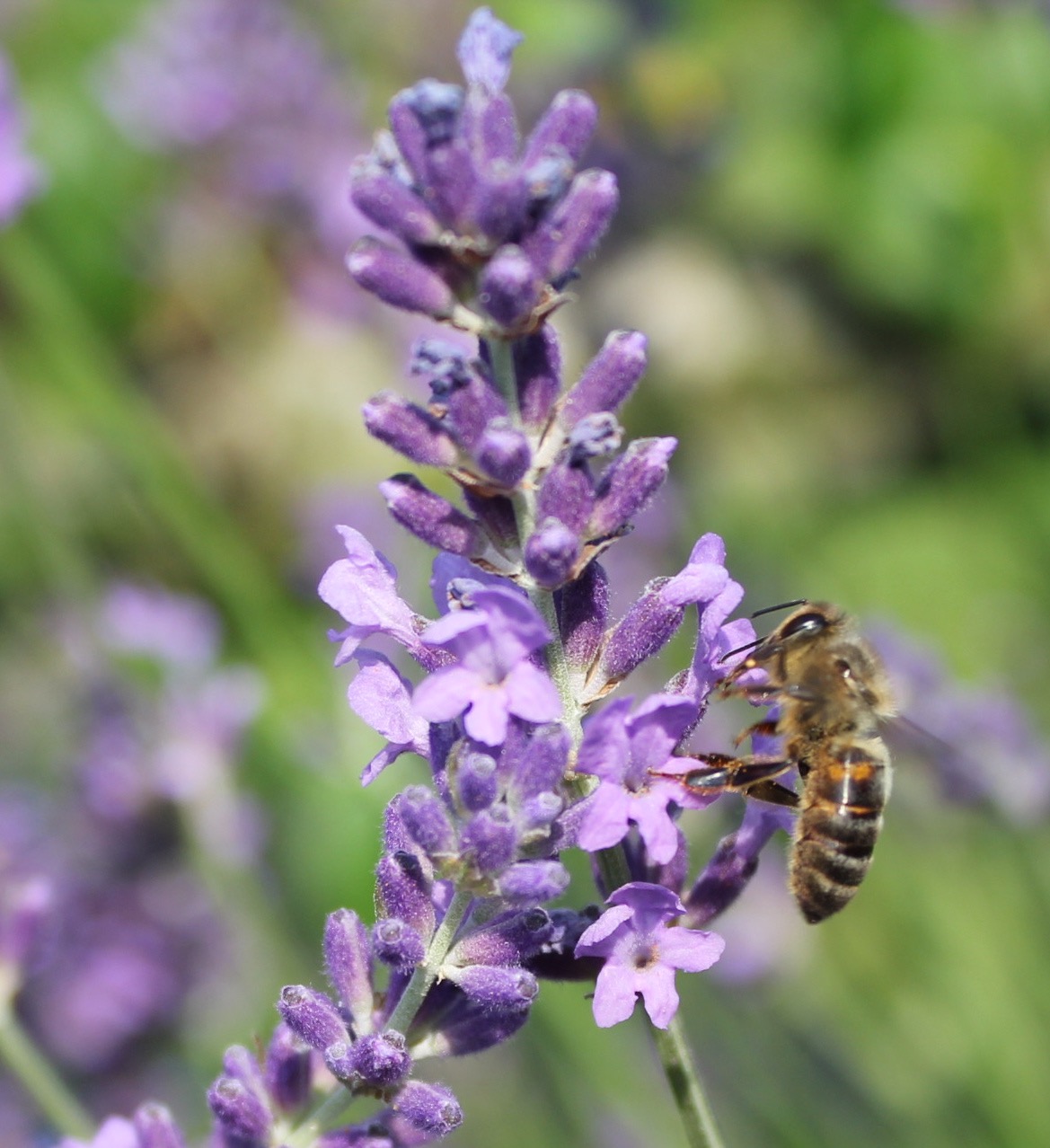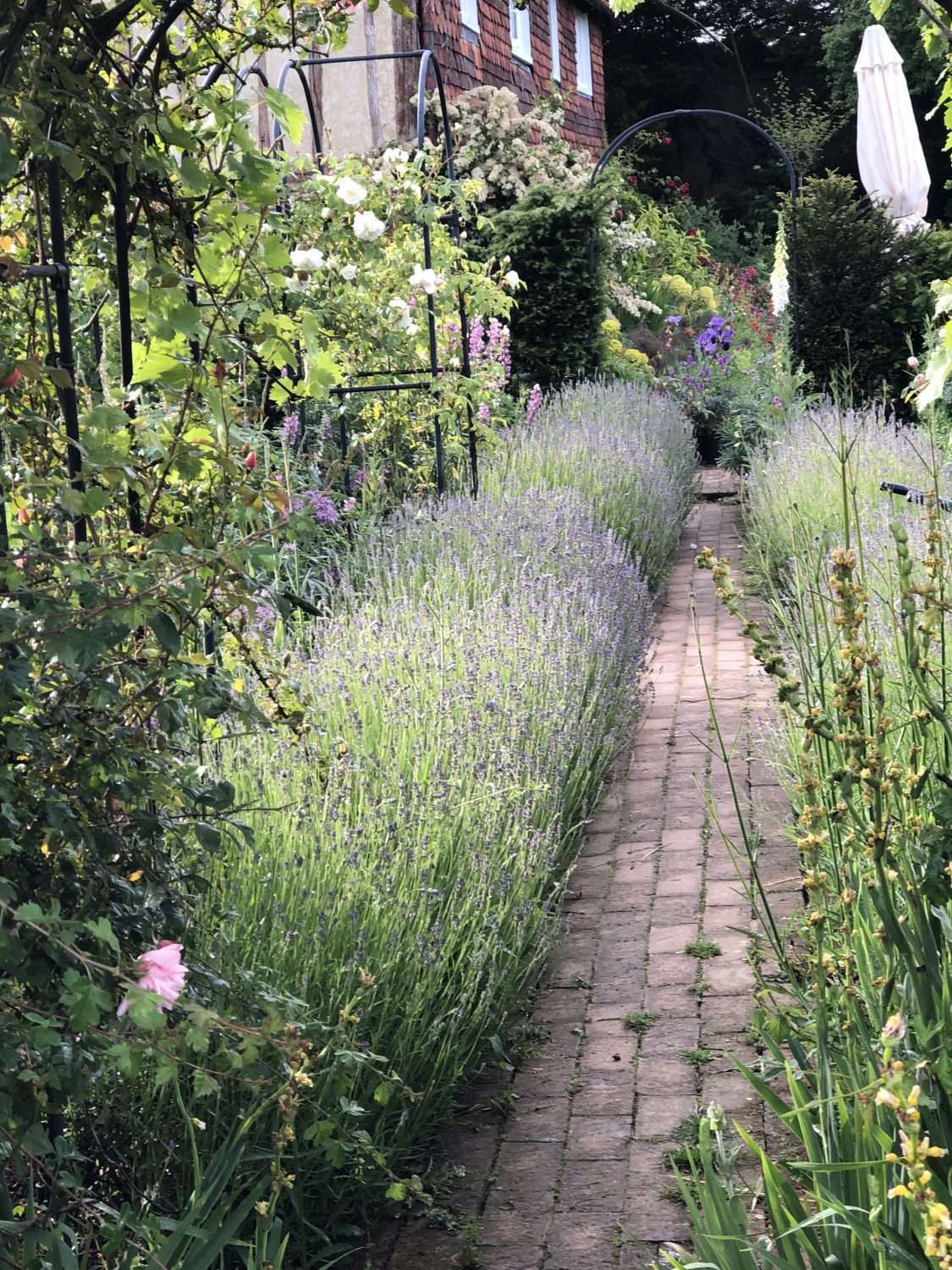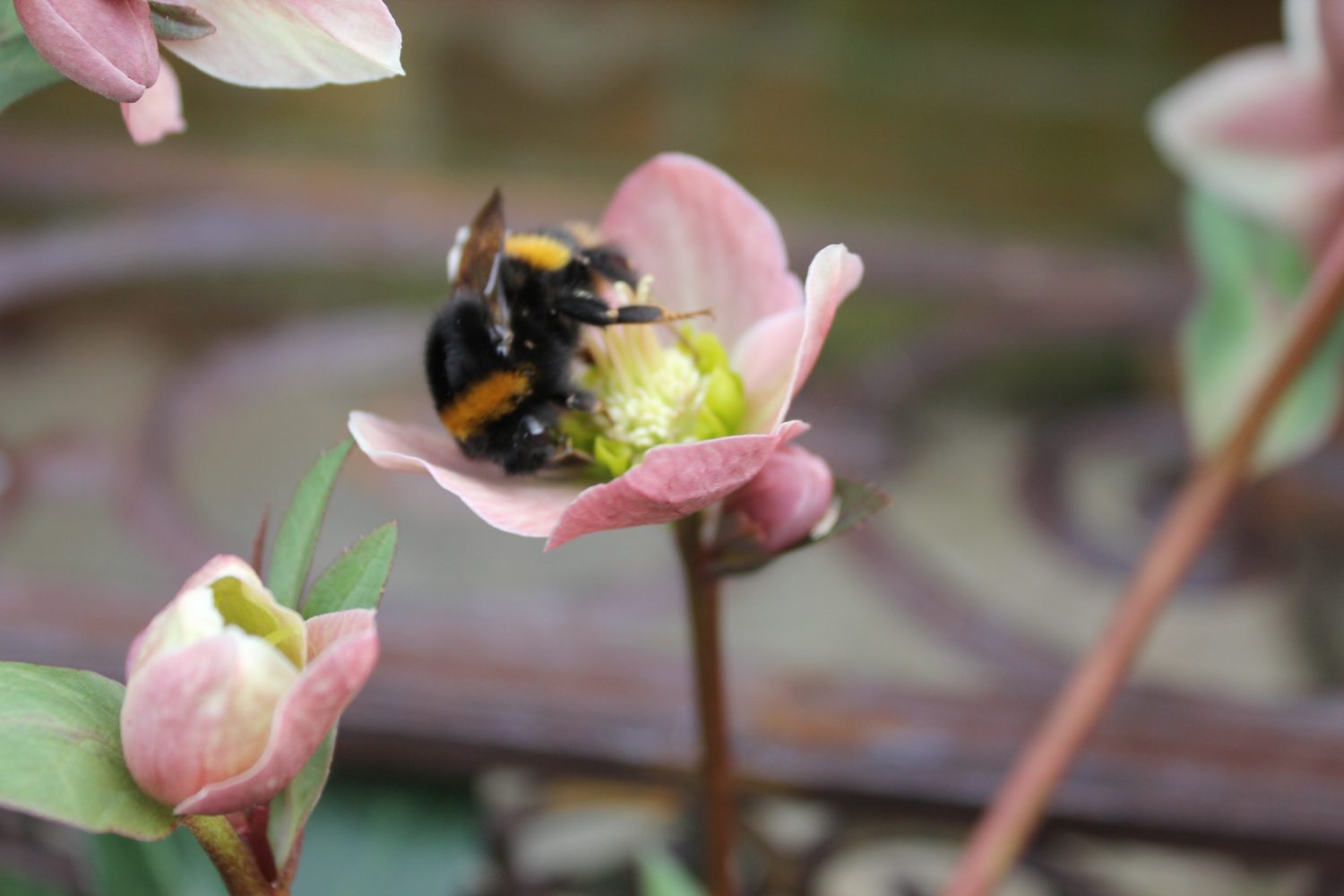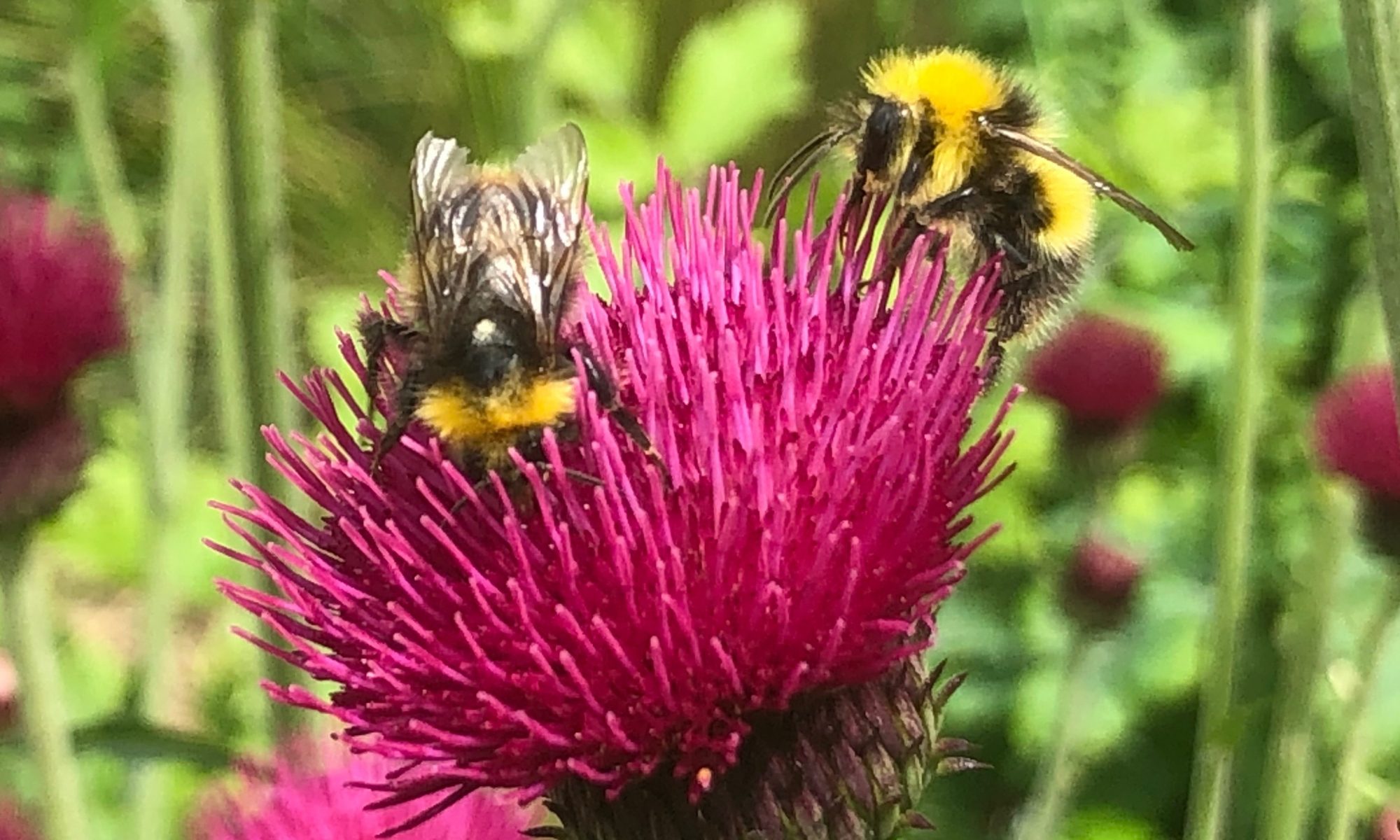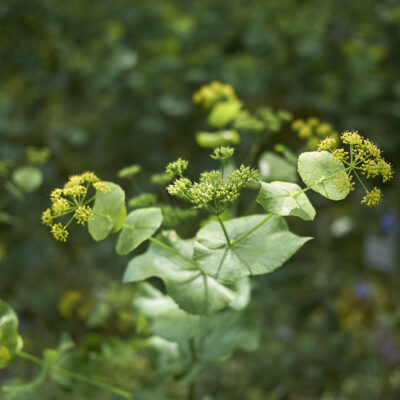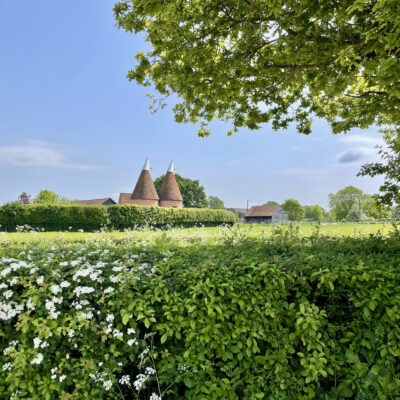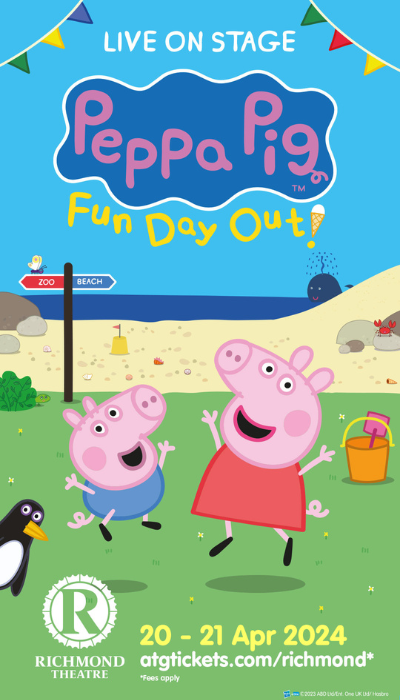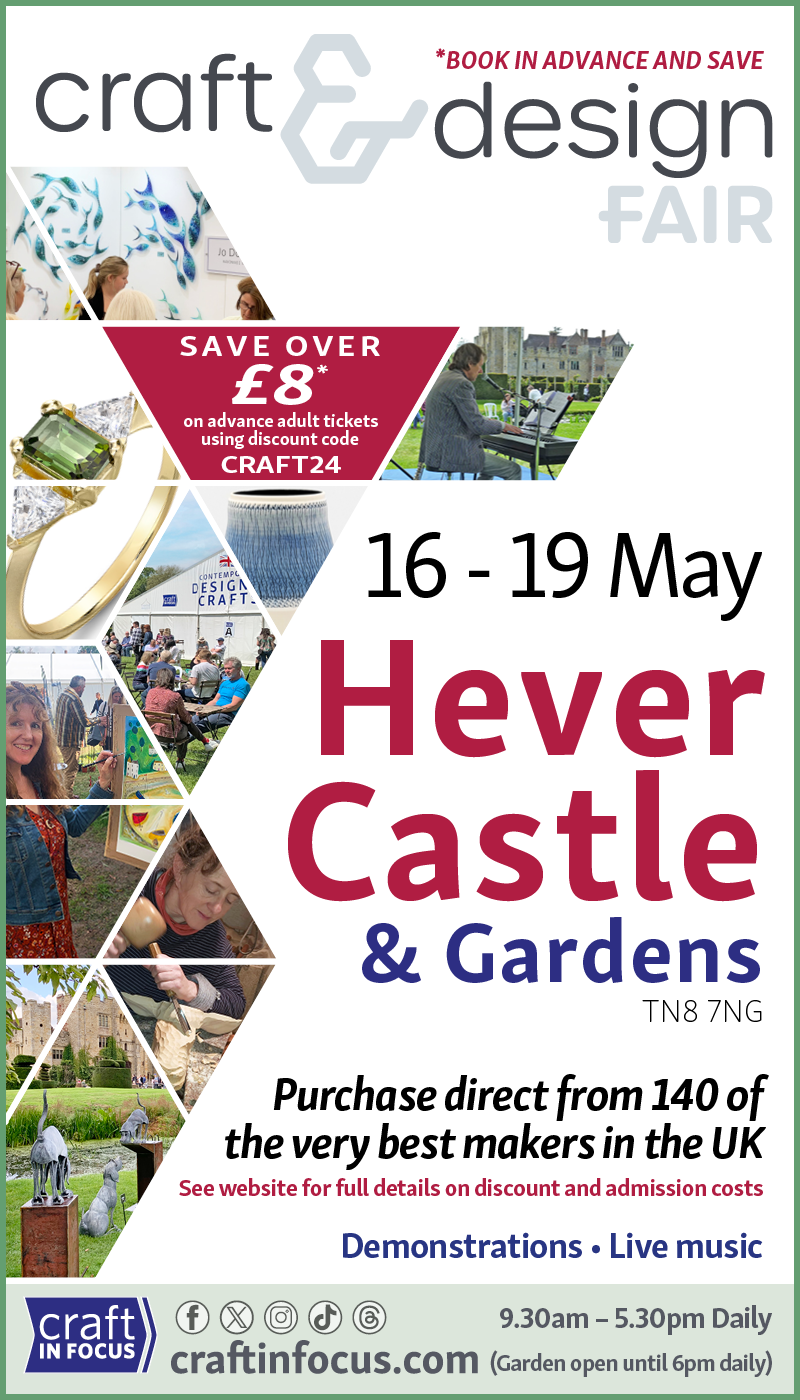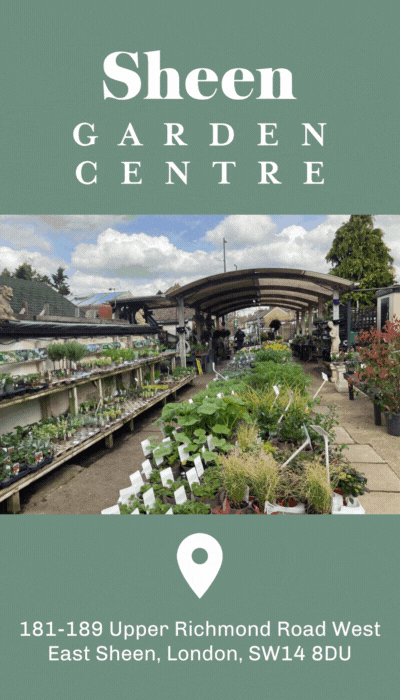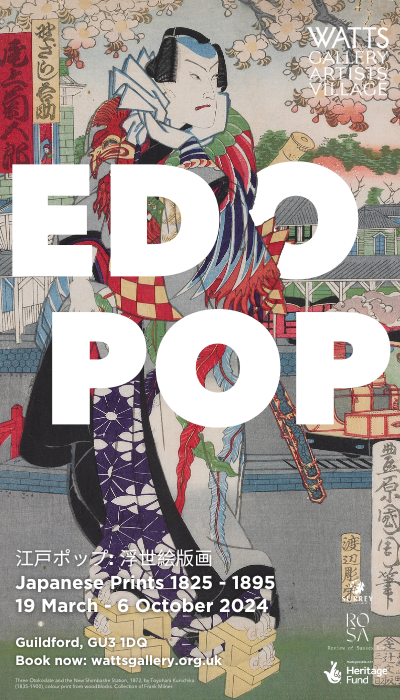Insects are in crisis at the moment, their numbers declining at a frightening rate, so anything we can do to attract them into our gardens will be of benefit. In fact, our gardens are proving to be bastions of hope and protection in an inhospitable environment. The attention is on bees, because they are such vital pollinators for crops and without them our own existence would be under threat too. Our gardens are fast becoming a vital resource for them, providing food and shelter and hopefully safety from pesticides. The sight and sound of bees buzzing brings a garden truly to life and reminds us that a flower’s job is to attract pollinators, that their beauty has a profound purpose, intricately linked to the existence of the insects.
Honey bees, bumble bees and stingless bees are in the Apidae family. There is just one honey bee, but there are 24 different species of bumble bee; some are social and live in colonies, some are solitary, some are tiny, some huge and furry – and easy to spot as they noisily bumble around the flower borders. Added to these are the leaf cutters, mason, mining and carder bees – and more besides. All bees do a vital job transferring pollen from one flower to another as they go about collecting nectar and pollen for their own purposes.
With a little thought, and a little less tidiness, your garden can easily be made more insect friendly. They just need places to build nests, shelter for overwintering and a reliable source of food and water. Food comes in the form of nectar and pollen and a plentiful supply all year round is really beneficial. Most flowers die back in the winter, but there are quite a few trees and shrubs that will produce winter flowers.
Water
Bees and other beneficial insects need to be able to access water, preferably fairly shallow, so that they won’t drown. Bees use water to drink, but also to cool the hive when the weather gets really hot. If you don’t have a pond, then a shallow dish of water, containing pebbles or stones for climbing onto, will provide them with a place to drink and collect water for the hive.
Shelter
Bees live in different kinds of habitats, depending on the species, but all pollinating insects need overwintering places where they can hibernate as adults or pupae. You can easily help them by leaving log piles, leaves and hollow perennial stems and seed heads for them to hide in. You could also build a bee hotel; make your guests feel at home using cut off sections of bamboo cane, pinecones and bundles of sticks inserted into a frame and positioned out of the prevailing wind and weather.
Providing nectar all year round
Most pollinating insects and bees will disappear when the weather starts to get cold, but on warmer winter days they occasionally wake up, or wake from hibernation much earlier. This is happening increasingly as a result of climate change, especially in the warmer south of England where some species have stopped hibernating altogether. It is vital to provide the winter insects and early emergers with food to help them get through this period when resources may be scarce elsewhere.
Nectar from flowers may be in short supply in the winter, but there are other sources: ivy flowers late in the year, the winter cherry tree Prunus subhirtella autumnalis flowers sporadically throughout the autumn and winter, Clematis balearica is in flower from mid-winter and once the worst of the January weather is over, there’s a host of late winter flowering shrubs to choose from, with the added bonus that many of them are scented. Early spring brings the first of the bulbs, together with woodland natives like primroses, aconites and wood anemones.
Flowers
Flowering plants have co-evolved with insects. Without insect pollinators there would be no real flowers – the plants would all have to rely on wind pollination, which is a fairly haphazard and wasteful process. Much better to pay someone to do the job properly. Nectar is the reward for pollinators and it is only produced in the nectaries of flowers as a lure – the plant has no need for it at all.
Some flowers hide the nectar in order to make doubly sure that enough pollen is collected, the bees have to go down deep into the flower to get to it, covering themselves in pollen in the process. These blooms tend to be tube-shaped and some even have landing strips to guide the bee to the right part; look closely at a foxglove and you will see the speckles inside are arranged in a specific way to help the bee. Snapdragons have a hinged lip that opens only when a heavy enough bee lands on the right spot, thereby ensuring that the pollen will brush off when the bee squeezes inside.
Other flowers are more open about the process and go to lengths to make things easy for their pollinators. Plants in the daisy (Compositae) family make a wide and secure platform for insects to land on; the centre is packed with lots of individual tiny, nectar-filled flowers surrounded by a fringe of sepals. This also means that once the bee has landed, it can spend more time collecting food from one place, rather than wasting time flitting from bloom to bloom.
Colour sends a message
Plants use colour to send a signal, advertising to the insects that the nectar bar is open for business. Brightly coloured flowers are naturally found in sunny situations, but in the shade the flowers tend to be pale, often white or cream, as this shows up better in dim light. They lure in the insects with scent rather than colour, pumping out their fragrance more vigorously in the evening to attract in moths and beetles.
Although bees will collect nectar from different flowers, they are very drawn to flowers at the blue end of the spectrum, with herbs such as lavender, thyme and borage most favourite.
Plants to grow for the bees
Native species, but not necessarily our natives, are the most valuable plants to pollinating insects, rather than highly bred cultivars encouraged to give up on producing nectar and pollen in favour of extra large or frilly petals instead. These tend to be sterile too, so of no interest to hungry insects. Stick to blooms that are open hearted with a single row of petals, instead of the show-offs which always remind me of the huge, puffy, Princess Diana-style wedding dresses of the 1980s.
Some useful nectar rich plants:
Early flowers
Lonicera fragrantissima – a shrubby, winter flowering honeysuckle with very fragrant, nectar rich flowers.
Hellebore – both the early Helleborus niger (Christmas rose), the slightly later Helleborus orientalis (Lenten rose) and the shrubbier Helleborus argutifolius will provide a vital source of nectar for early emerging bumble bees and other insects.
Early spring bulbs, such as winter aconites, crocuses, Scillas and Muscari will carpet under trees and shrubs.
Mid-season
Aquilegias – these appear at the end of spring and will self-seed in favourable conditions
Herbs, such as Thyme and Marjoram, are very pretty when they flower – just cut them back as you would lavender once they’ve finished to keep them tidy.
Scabious – a mound forming perennial for the front of the border with long lasting ‘pin cushion’ flowers in shades of pale blue, pink or white.
Late summer and autumn
Buddleia – our beloved butterfly bush that flowers in late summer and attracts a mass of pollinating insects. Prune hard in spring so that you will be able to appreciate the flowers at eye level – left unpruned buddleias grow too tall and unruly – and the flowers will appear right at the top of the plant.
Hebe – these mainly evergreen shrubs come in many sizes, but all produce nectar rich flowers at around the same time as buddleias
Verbena bonariensis – a tall, wiry, but elegant meadow plant from Argentina. If it likes you, it will set seed literally everywhere…
Asters – with their late flowering daisy flower heads will flower into October and beyond.
Abelia grandiflora – an autumn flowering shrub with small, pale pink flowers and long lasting darker, rusty pink bracts
Contact Jo for gardening courses and advice: 01233 861149
jo@hornbrookmanor.co.uk
TEST
Foxgloves have spotted ‘landing strips’ designed to guide the bees into the flowers
TEST
